India’s Dying Well of Death
Brave stuntmen have long been riding the near-vertical walls of India’s Well of Death—but the popular spectacle is on the decline
At the Hindu festival of Magh Mela last January, hundreds of spectators crowded around a circular pit to witness a dying spectacle: daredevil drivers—in cars or on motorcycles—zipping precariously around a near-vertical pit known as the "Well of Death." Once a sight at festivals across northern India, the practice is now waning—but that doesn't stop festivalgoers and stuntsmen from capitalizing on the few remaining Wells of Death in the country.
If the Well of Death spectacle seems familiar to American and British citizens, that's because the show is based on the American motordromes that dominated fairs in the early 20th century. The first motordrome, a form of boardwalk motorcycle racing involving a slanted track, debuted at Coney Island in 1911. Though their popularity has since waned—a 2006 New York Times article said there are only three left in America—the spectacle spread overseas, becoming wildly popular in Britain. Around 1915, the motordrome turned into the silodrome, shaped like the open circle of a grain silo. Riders would skirt around the edge of the circle, held in place by centrifugal force. In 1929, the first silodrome appeared in the United Kingdom, at Kursaal amusement park in Southend-on-Sea, Essex. The phenomenon fared better in the UK than it did in the United States, remaining popular throughout the 1960s.
Eventually, the spectacle made its way to India, where it was readily adopted by carnival performers. Initially, the performers used manual bicycles to ride around the silodromes. The stunt would go on continuously for 48 hours, according to Surbhi Goel, assistant professor at Panjab University in Chandigarh, India. Eventually, pedal bicycles were replaced by motorcycles and cars (a uniquely Indian addition to the performance).
"Since [cars and bicycles] require re-fueling, longevity has been replaced by daring jumps and stunts," Goel says. Today, performers up the danger of the event by grabbing money from the outstretched hand of spectators, holding hands with fellow riders or switching from cars to motorcycles and back again, all while driving around the wall.
In 2010, the British rock group Django Django featured Well of Death riders from Allahabad in the music video for their song "WOR."
According to Shorna Pal, a director-writer based in Preston, Lancashire, in England, performers tend to be poor, but the audience can come from any socioeconomic background. "It's not a properly advertised event as the young men are usually from pretty impoverished homes and just 'put up' the show where and when they can," she says. "The tickets are extremely cheap and geared at an audience who may be from any economic band, who may have wandered into the park."
The Indian version is considered even more dangerous than western silodromes, since safety precautions aren't often observed—drivers typically don't wear helmets, and cars and motorcycles are often in need of repairs. Sometimes, the wells—constructed out of wooden planks and measuring some 30 or 50 feet across—are missing pieces of wood, creating a precarious surface for cars and motorcycles reaching speeds of 40 miles per hour.
Interest in the spectacle is on the decline, however, as a new generation turns to electronic diversions. "The circus has declined as an attraction for a larger community, hence these shows are now not as fun," Goel says. "Television is the biggest cause—most people would prefer to see daredevil/stunt shows on TV. Films have better and more entertaining stunts. Popular films in Hindi, Tamil and Telugu have amazing stunts, and those are more attractive for a major population."
Planning Your Next Trip?
Explore great travel deals
Smithsonian magazine participates in affiliate link advertising programs. If you purchase an item through these links, we receive a commission.
/https://tf-cmsv2-smithsonianmag-media.s3.amazonaws.com/accounts/headshot/natasha-geiling-240.jpg)
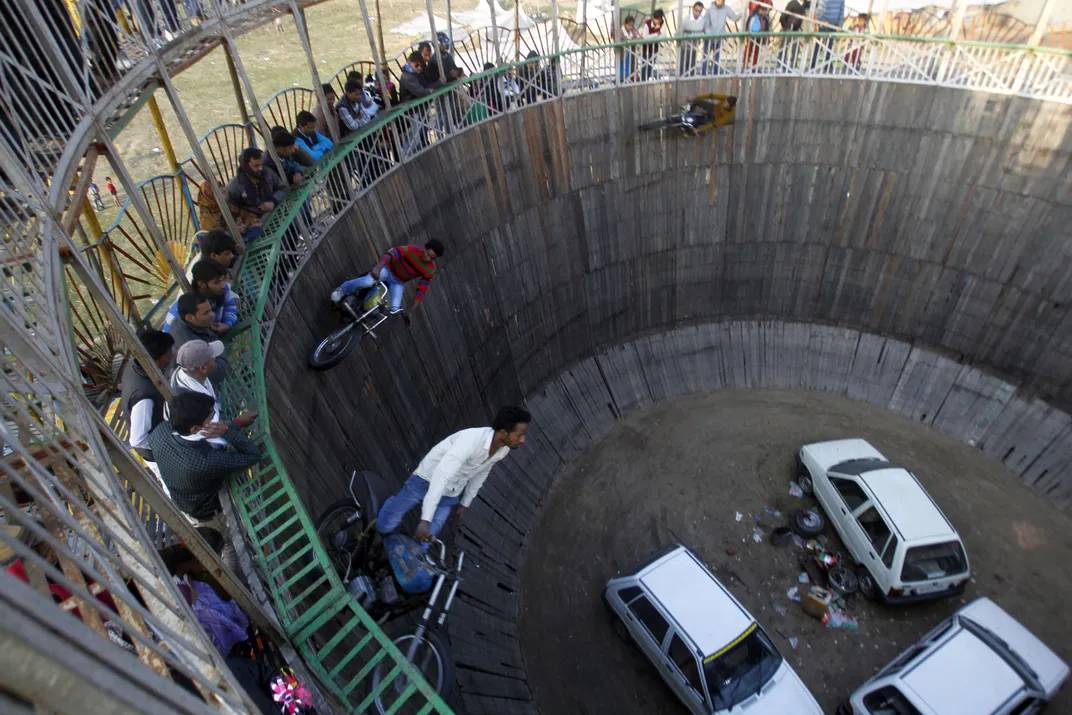
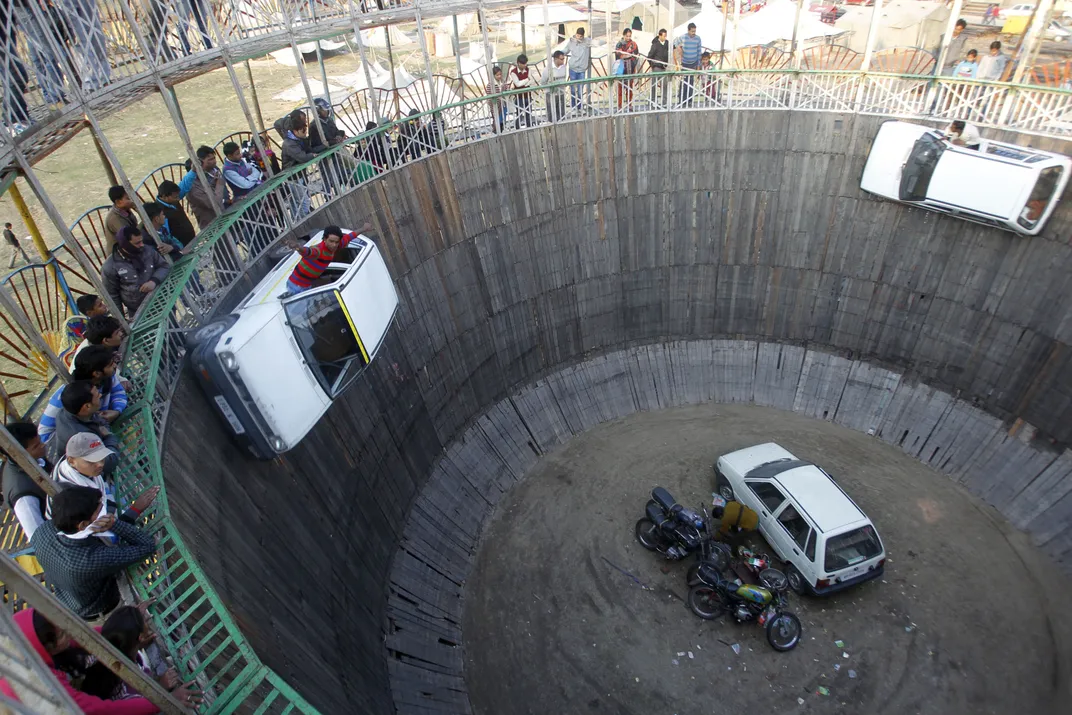
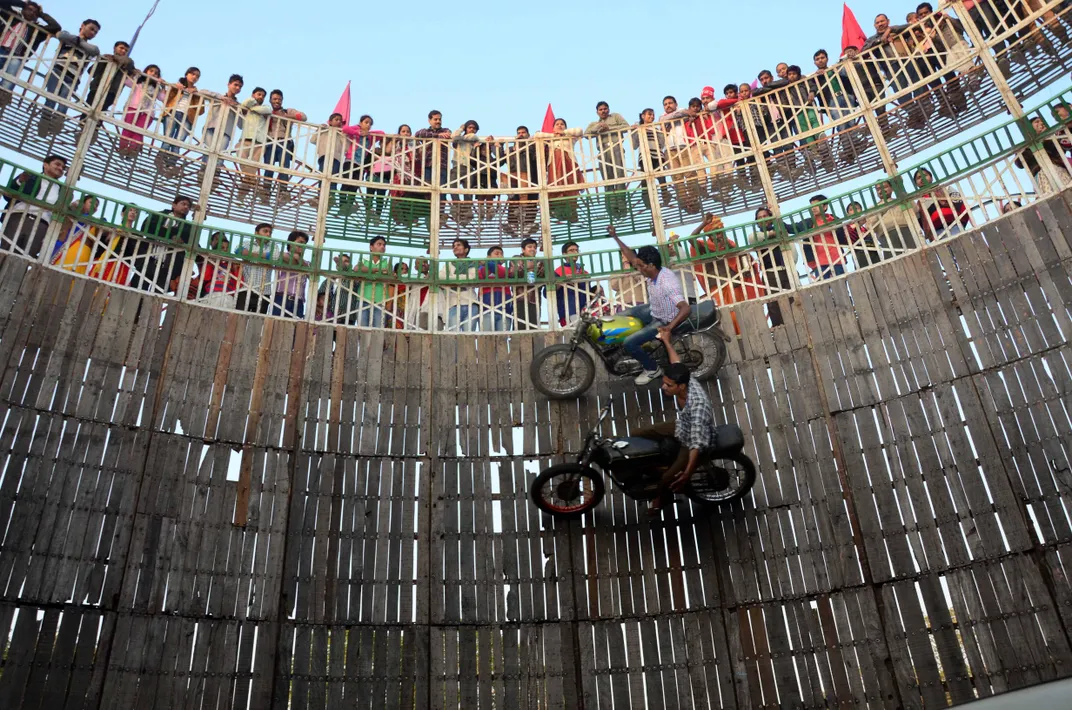
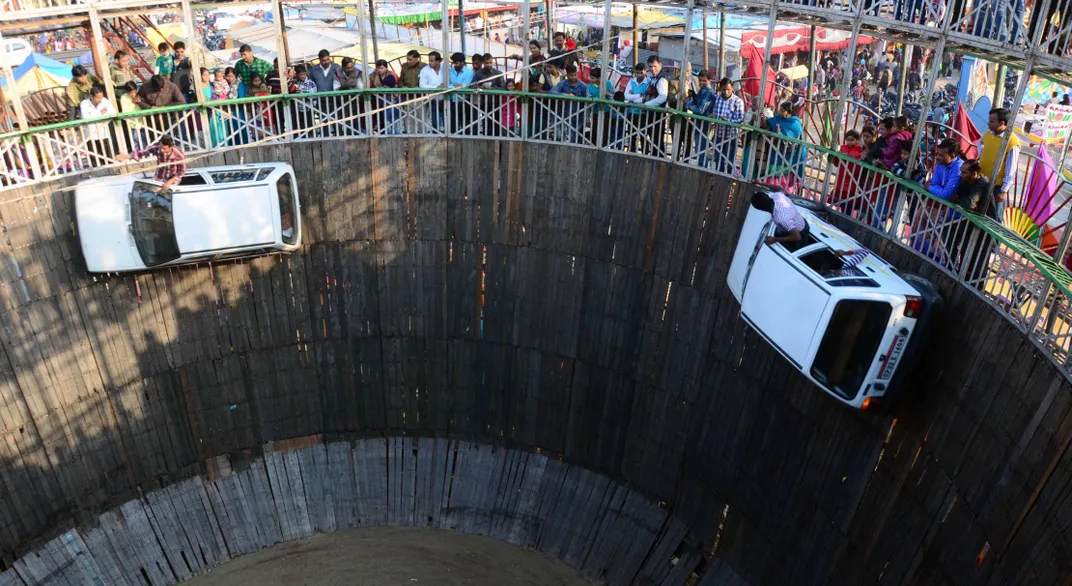

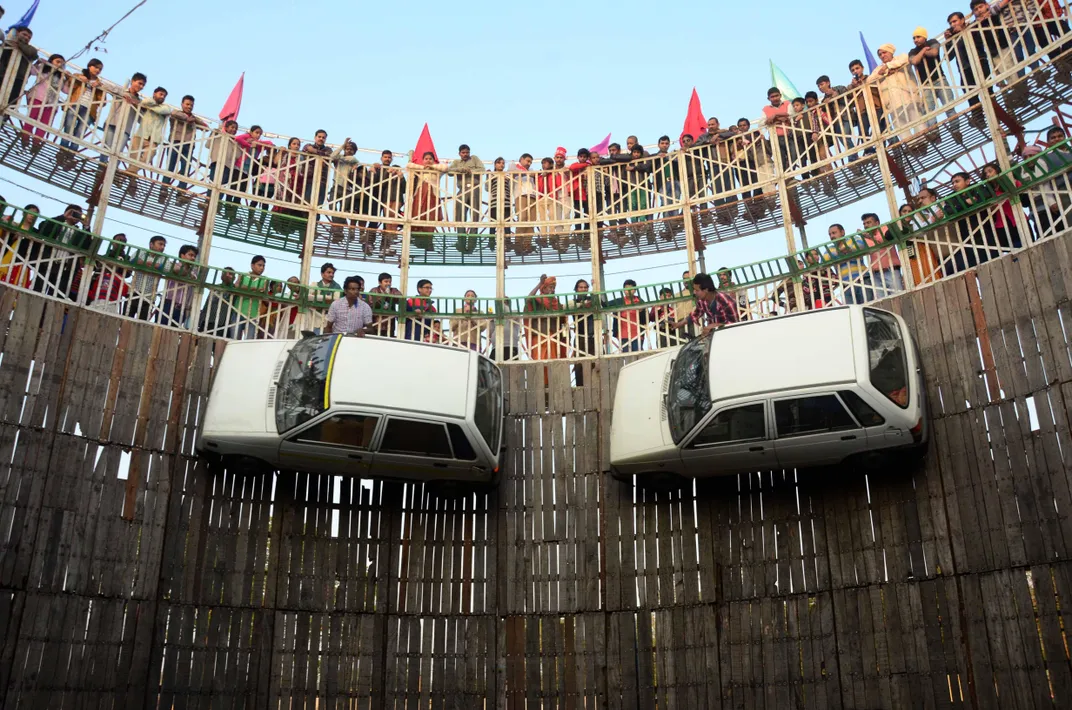


/https://tf-cmsv2-smithsonianmag-media.s3.amazonaws.com/accounts/headshot/natasha-geiling-240.jpg)